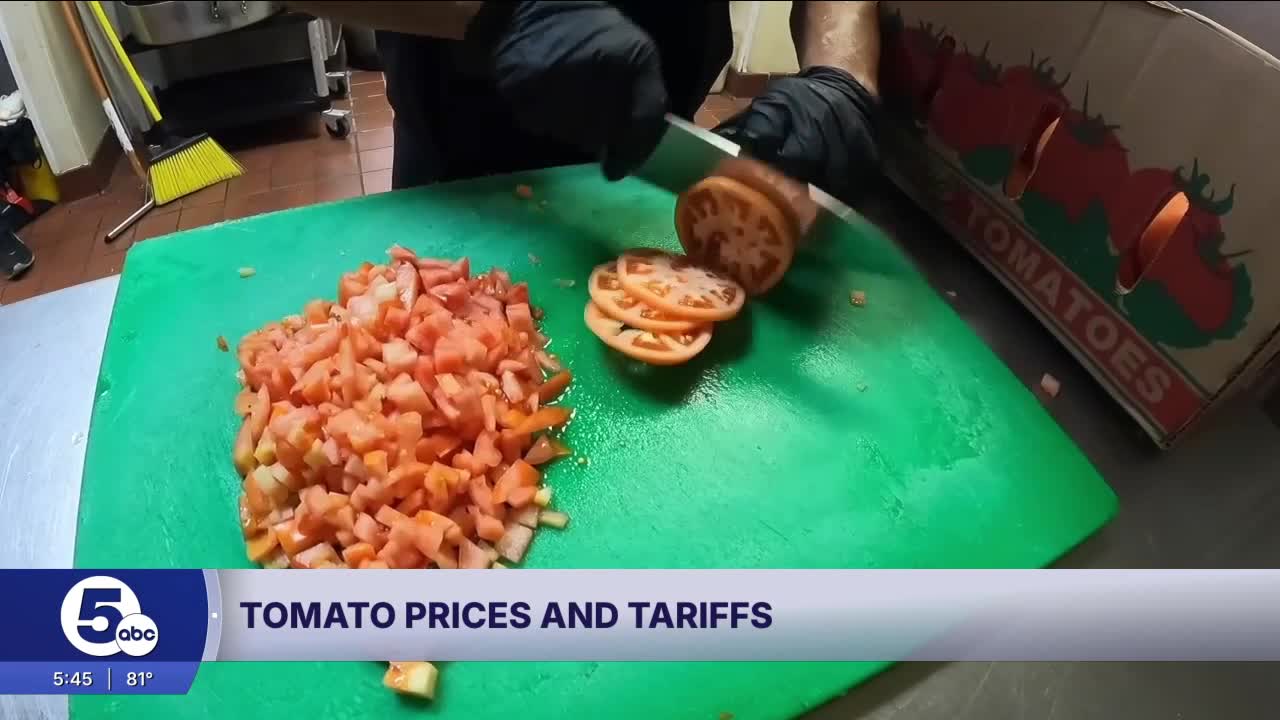CLEVELAND — Whether it’s pizza, pasta or salsa, tomatoes are the backbone of many restaurant kitchens across Northeast Ohio. But a new federal tariff on imported tomatoes could leave some local businesses in a financial squeeze.
The U.S. Department of Commerce recently terminated the Tomato Suspension Agreement with Mexico, a longstanding trade deal that helped keep prices stable by preventing produce dumping. As a result, the Trump administration imposed a 17% tariff on most fresh tomatoes from Mexico, which took effect on July 14.
Scott Nathanson, owner and operator of Scotti’s Italian Eatery on East 185th, said he’s seen a price increase on lots of different foods, including tomatoes already.
“Back in March, we were paying $25.20. Now we’re paying $30.40,” he said.
Nathanson says about 90% of the dishes on his menu involve tomatoes in some form, from sauces to toppings. In January, he raised prices for the first time in a decade, partly due to rising ingredient costs.
“If it wasn’t for tomatoes, I’d probably be doing something else,” he said.
To avoid raising prices even more, Nathanson said he’s made cuts elsewhere, like eliminating fresh flowers on each table.
At Cilantro Taqueria in Shaker Heights, co-owner and general manager Diego Galindo said they are monitoring prices closely.
“Tomatoes are actually one of our core ingredients, from salsas to marinades to just our meats in general,” he said.
Galindo said food prices have already forced small price increases, about 20 cents on some items, but they’ve been trying to absorb most of the costs to avoid passing them on to loyal customers.
“Our regulars will certainly notice it [in] a little bit, but no one’s complained yet,” he said.
According to industry analysts, the majority of fresh tomatoes sold in the U.S., about 70%, come from Mexico. Critics of the tariff warn that shifting to a U.S.-only supply could take years and won’t immediately offset the impact on restaurant budgets or consumer prices.
For now, chefs and restaurateurs say they’re finding creative ways to trim costs, just not tomatoes.




